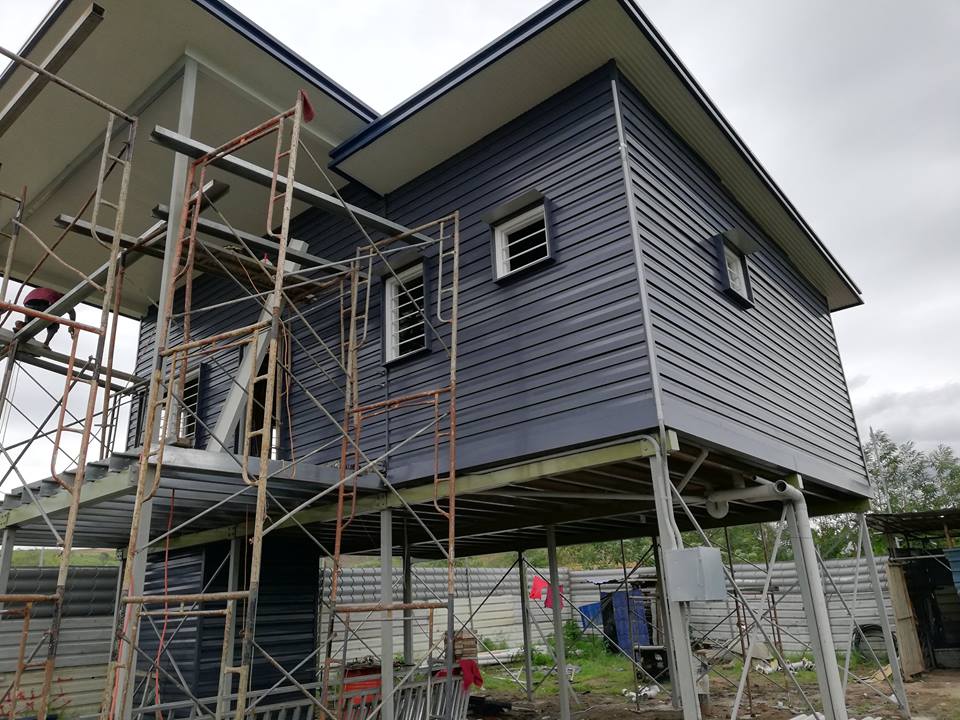Sweat equity is a term used to describe an individual’s or a group’s contribution to a project through the means of physical labor. Sweat equity is all about individual effort and initiative, and has a respectful place in the business world, too.
Take, for instance, a new air conditioning repair and installation company. The owners will pitch in their own effort and toil to build the business from the ground up. In similar circumstances, a property under DIY improvements to increase its value by the owners themselves, make up the definition of sweat equity.
So, the sweat that drips down your forehead. A sore arm. The prickling of sun rays on your skin, are all part of kick-starting the operations of a business or increasing the value of a property through DIY improvements, collectively summing up what a ‘sweat equity’ is.
But before we stretch this concept, let’s consider first its origin, present-day application, and what “equity”, on its own, means:
Origin
Sweat equity was first conceptualized in the United States in 1937, by a housing project called American Friends Service Committee. But it was not until the 1950s when the same organization (AFSC) popularized the term during their quest to help migrant farmers of California build their own homes. From here on, the concept has reached worldwide status, creeping into every business startup and real estate jargons.
Present-Day Application
Sweat equity, however, is perhaps most synonymous with a successful model used by Habitat For Humanity, a global non-profit housing organization - which helps families who would otherwise be unable to purchase a home - contribute sweat equity hours to the construction of their own home.
Once these families are settled in their new homes, they resort to making interest-free mortgage payments into a revolving fund, which in turn generates capital for building new homes for other families.
As its history suggests, sweat equity was all about physical labor, zero hours, and property development. Financial contribution was either optional or out of the question.
Still and all, many business startups of today have adopted the concept of sweat equity to define similar scenarios, such as a partner contributing to a project in the form of effort and toil, as opposed to capital equity.
The Meaning Of Equity
Equity, from a housing point of view, is how much of the property that one actually owns. Imagine you own a house worth K200,000 and you owe K120,000 on the loan you took out to buy the house. The difference between the value of the house and what you currently owe on the loan is the equity, in this case it would be K80,000. So, equity is the difference between how much your property is worth and how much you still owe on the loan you took to buy the property in the beginning.
That is equity for you. Now, let's move on to the crux of this article...
Sweat Equity And Property Development
Newton’s third law of motion states that “For every action, there’s an equal and opposite reaction”, and as dignified as it sounds, the statement can be generally felt throughout every aspect of life. An increase in equity in homes due to the impact of increasing property prices and a consistently strong real estate market, is no exception.
As a habit, many people usually want their homes to increase in value, and in turn passionately generate a handsome return on investment (ROI), when the home goes up for sale or rent. This draws a number of conclusions relative to return on investments.
For example, a well manicured lawn will take a fair amount of time and effort to perfect, and it will increase both the value of your home and the equity, without any financial input.
Thus far, there are supplementary options available to homeowners when looking to increase the equity in their homes. Options such as completing your mortgage repayments on time and DIY home projects are equity boosters. This is where it gets interesting with the latter mostly possessing the crux of this article.
Note: Not only does sweat equity resonate with homeowners engaged in home improvement projects. But also any business that sets out to improve the value of its entirety and location, which tends to generate sweat equity as well. Nonetheless, the term is commonly applied in residential real estate, where DIY home projects thrive.
Naturally, DIY home projects can actually add value to your property in the long run. As far as a rise in the value of the property and ROI are concerned, home improvement projects are virtues to live by.
By choosing to put your handyman skills to work on simple DIY home projects, instead of external input, the chances of an increased equity in your home is inevitable.
The Value Of Sweat Equity
Expanding on the calculation of equity earlier, let’s determine how you can get the value of sweat equity, amongst all that, if you were to find yourself in such a situation.
For example, say you decide to do some improvements to your house. A paint job here. A verandah extension there. You mow your lawn. You redo the gardens, and after a day or two, the house and the immediate landscape looks impressive and almost brand new. You did it all by yourself. Thanks to your sweat, you’ve improved the look of your property. But where does sweat equity fit in, you ask? Ok, let’s say the value of the improvements you did to the property is at K10,000. The property, on the other hand, is worth K200,000. After the improvements, the property is now worth K210,000 (value of the property before the improvements + value of the improvements), because you’ve just increased its value with the improvements. This increased value is your sweat equity. In other words, the value of sweat equity in all these is K10,000 (the value of the property after the improvements less the value of the property before the improvements).
So the value of sweat equity is determined by the difference between the value of the property before the DIY improvements, and after the DIY improvements.
However, your sweat equity is susceptible to changes that may result from an unsteady real estate market or the kind of DIY improvements to your home, or even the lack of it, which can influence the worth of the property, thus, a different value every time.
Conversely, your sweat equity value (K10,000) in the given example, on the other hand, is also affected by the balance of the mortgage as you offset each installment.
All in all, the value of a property can be improved by positive changes in the real estate market, and simple DIY home improvements - this is where sweat equity enters the equation.
Needless to say, home improvement projects are an ideal way to give your property a promising growth in value.
So, the effort - or sweat - as your input into adding value to your property, is the very definition of sweat equity.




Comments